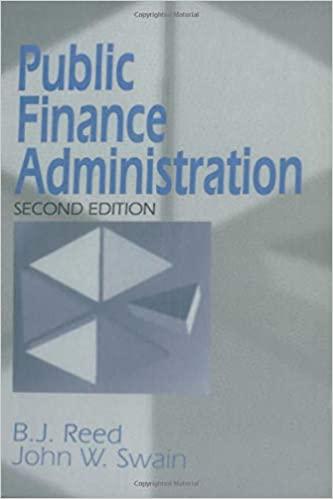Question
Given all of the information provided in the attached case: (Show your work, calculations, and explain your answers well) Cost of Capital, Capital Structure: Capital
Given all of the information provided in the attached case:
(Show your work, calculations, and explain your answers well)
-
Cost of Capital, Capital Structure:
-
Capital Structure theory addresses finding a firms optimal capital structure. How do you determine the optimal capital structure?
-
What is the firms current Weighted Average Cost of Capital (WACC) at its current capital structure?
-
Complete the Cost of Capital & Capital Structure worksheet.
-
What is the companys optimal capital structure?
Case
B.E. Kemper, LLC (KEMPER) is a custom parts fabricator supporting the classic auto and recreational marine industries.
The company is evaluating a proposal by its Marketing department to develop one-of-a-kind, customized parts for resto-mod professionals and the hobbyist in their desire for that special, unique new old car/truck. This approach will require the expertise of design artists and engineers working with the restorer and the need for custom programs, computer-aided design, CNC milling equipment, and both polymer & metal 3D printing equipment.
Market studies indicate that the restoration market is continuing to grow and is broadening to include the newer classic vehicles of the 80s and 90s. The industry consists of both professional restoration shops and many talented hobbyists. The anticipated demand is incorporated in the forecasts below.
-
Sales Forecast:
The estimate of sales revenues for this project is $1,200,000 in year 1. Sales growth of 75% is forecast for year 2, 50% for year 3, 25 % for year 4, then the growth rate settles to 5 % each year for years 5 and 6. Sales are then stable with a growth rate of 0% (equal to year 6) in years 7 and 8. Finally, sales are expected to decline by 10% per year beginning in year 9.
-
Production cost forecasts are:
O Fixed costs: $545,000 per year (a large portion of this cost is labor for the designer and engineer).
O Annual variable costs: 45 % of sales revenue.
-
The company will have to purchase new equipment, mentioned above, to produce the new product. The equipment, including shipping and installation, is expected to cost (t=0) $ 5,225,000.
-
The equipment falls into the IRS 10-year class life using the MACRS depreciation method with the year convention. (See MACRS table).
-
If the company goes ahead with the proposed product, it will affect the companys net operating working capital. At the outset, t =0, inventory will increase by $265,000. Accounts receivable will increase by $155,000, and accounts payable will increase by $225,000.
-
The net operating working capital will be liquidated after the project is completed.
-
The program (project) is planned to continue for 9 years. At the end of the project, the equipment will be salvaged (sold). The forecasts predict that the equipment can be sold then for $275,000.
-
The new production line will be located in an empty part of the firms warehouse that has been unused for the past several years. The firms accounting department has indicated that they will allocate $75,000 overhead per year to the project to account for this.
-
The company has a marginal (federal + state) tax rate (T) of 32%, and uses MACRS depreciation.

-
Hurdle Rate
-
KEMPER uses the firms WACC (Weighted Average Cost of Capital) for average-risk projects, and it adds 2% for high-risk projects. For low-risk projects, it uses the WACC less 2%.
-
Management utilizes risk-adjusted hurdle rates for evaluating capital budgeting projects.
-
All potential projects are classified using a five-level classification system:

-
KEMPER considers the proposed project to be a high-risk project.
-
KEMPER - Financial Structure
-
Current Capital Structure
-
KEMPER has the following levels of debt and common equity (market values):
-
Debt: $2,862,300
-
Equity: $7,811,700
-
Total Capital: $10,674,000
-
Your analysts compiled current market information:
-
Market risk premium (rm rrf): 4.50%
-
Risk-free rate (rrf): 3.65%
-
-
The companys beta (at its current capital structure) is: 1.35
-
The companys before tax cost of debt r (at its current capital structure): 4.28%
-
After discussions with an investment banker about issuing additional debt, your analyst found that the cost of debt (before tax) depends on the amount of debt in the capital structure. Cost of debt estimates for various levels of debt financing (D/E) were obtained and the firms analysts have partially prepared information for the companys cost of capital at various levels of debt and equity
-

-

-
-
Where:
-
rd = before tax cost of debt,
-
rd(1-T) = after tax cost of debt,
-
b = beta,
-
rs = cost of common equity,
-
Wd = Weight of debt,
-
Wce = Weight of common equity,
-
-
Step by Step Solution
There are 3 Steps involved in it
Step: 1

Get Instant Access to Expert-Tailored Solutions
See step-by-step solutions with expert insights and AI powered tools for academic success
Step: 2

Step: 3

Ace Your Homework with AI
Get the answers you need in no time with our AI-driven, step-by-step assistance
Get Started


